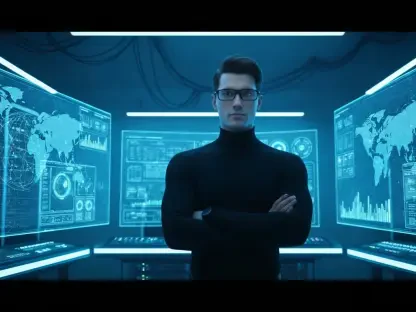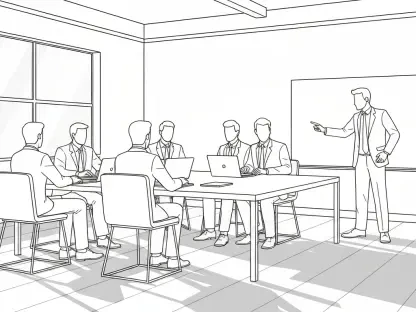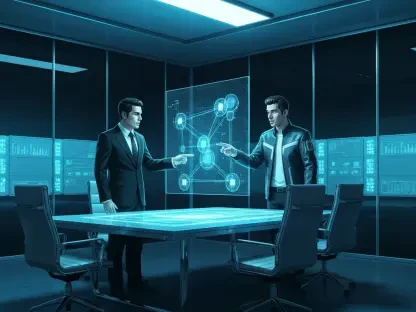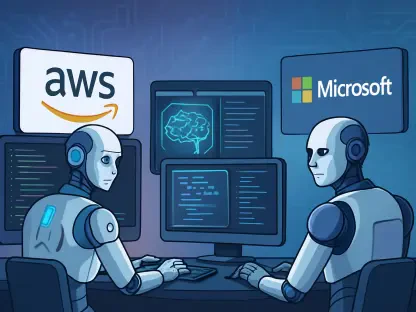In the rapidly evolving landscape of technology, a stark disparity exists between the ambitious visions of technology vendors and CEOs, and the tangible realities confronted by IT departments. This divergence poses critical challenges for Chief Information Officers (CIOs) as they strive to align their organizations with the ever-shifting tech landscape. While tech visionary ideals paint a picture of a futuristic utopia, IT professionals navigate the immediate challenges of implementation, integration, and maintaining operational stability. For many, this journey involves balancing the aspirational with the practical, weaving futuristic potential into the fabric of everyday operations.
Reconciling Futuristic Ideals with Everyday Operations
The Execution Dilemma
The heart of the issue lies in aligning visionary technology goals with the immediate, pressing demands of IT operations. Tech vendors often present utopian ideas, expecting them to perfectly dovetail with existing frameworks. However, the real world requires a substantial degree of adaptation, innovation, and integration to realize these visions within a company’s infrastructure. Cheryl Smith, a CIO with a deep resume at companies like WestJet and McKesson, emphasized the importance of ensuring IT systems remain relevant while being architecturally sound enough to last for up to seven years. This approach insists upon a balance between immediate execution and long-term strategic vision, a balance many IT leaders today find elusive.
Simultaneously, Lou Gerstner, IBM’s former CEO, championed an “All about execution” mantra, which inadvertently steered many CIOs towards short-term solutions. This focus might have solved immediate problems but sometimes neglected overarching strategic goals. This approach, while providing quick results, often led to a cycle of problem-solving that ignored the need to craft a substantial, cohesive roadmap for the future. The challenge for today’s IT professionals is evolving from merely executing tasks to shaping a sustainable technological plan that delivers lasting value to their organizations.
Visionary Disconnect in Tech Leadership
Tech vendors have traditionally been seen as the harbingers of the future, yet their present narratives often miss the mark in addressing the genuine needs of IT departments. The once-inspirational speeches and roadmaps presented at tech conferences now appear disconnected from the arduous day-to-day realities of IT professionals. This disconnect is marked by CEOs appearing insulated within a “bubble,” seemingly out of touch with the real-world scenarios their technology is meant to empower. The need for engagement with end-users is critical to ensure technology solutions are grounded in reality and not merely fanciful visions.
The current state of futurist agendas in technology is marked by often romanticized ideals that overshadow necessary discussions about attainable, realistic goals for the near future. The need is for tech companies to invest in grounding their futuristic messages in the actual, practical expectations and challenges faced by their customers. Vendors should actively seek to understand the unique circumstances of their clients, shifting the focus from detached futurism to genuine discussions that prioritize immediate technological improvements and real-world applicability.
Bridging the Gap Between Vision and Reality
The Role of Engaged Dialogue
To bridge the gap between vision and reality, it is essential that tech vendors foster open dialogues with their customers. This interaction helps in creating technology that aligns with the genuine needs and anticipations of organizations. For CIOs, part of the solution lies in prioritizing discussions that press vendors for detailed statements about their investments in marketing versus actual product development. As opposed to slick slogans, there’s a need for in-depth conversations and transparent engagements that provide insights into how these technologies can concretely benefit their operations.
The narrative surrounding artificial intelligence (AI) is a prime example where visionary hype often overshadows pragmatic application. While CEOs like Jensen Huang of Nvidia and Sam Altman of OpenAI articulate visions of AI’s future potential, there is a pressing need to focus on incremental improvements that offer substantial, tangible benefits. This mindset requires an understanding that futurism should not eclipse current practicality but should integrate smoothly, providing a solid foundation that supports realistic expectations and sustainable growth.
The Risk and Reward of Future Investment
Investing in future technologies invariably comes with risks, as highlighted by high-profile examples such as Microsoft’s acquisition of Skype. This decision, once hailed as a strategic leap, ultimately fell short of expectations when Skype’s relevance waned over the subsequent 14 years. This underscores the unpredictability inherent in predicting future tech success. Nevertheless, this risk is not without reward when approached with a strategy that emphasizes directionally correct steps. The key for CIOs is to pursue efforts that build towards a future aligned with their organization’s goals, without losing sight of the immediate needs of the present.
Thornton May’s critique further reveals the need to reclaim the narrative surrounding technological advancement from impractical long-term visions. Drawing insights from Adam Becker’s “More Everything Forever,” a philosophy emerges, emphasizing incremental steps and practical ideologies. This ideology promotes leveraging visionary goals not as distant dreams but as guiding principles that shape short-term strategies, thereby achieving a balance that fosters immediate improvements while steering an organization towards future success.
Paving the Way for Strategic IT Leadership
In the dynamic realm of technology, there’s a notable gap between the ambitious visions of tech vendors and CEOs, and the actual challenges faced by IT departments. This discrepancy presents significant obstacles for Chief Information Officers (CIOs) as they endeavor to synchronize their organizations with the ever-changing tech landscape. Whereas tech visionaries often describe grandiose futures, IT professionals are immersed in the present-day hurdles of implementation, integration, and maintaining operational stability. The journey for CIOs often involves a delicate balance, intertwining aspirational technologies with practical realities. This requires them to weave innovative possibilities into their organizations’ daily operations without jeopardizing existing systems. How CIOs integrate cutting-edge advancements into everyday workflows determines their ability to keep pace with technological evolution. The challenge is to harness visionary ideals while addressing current needs, creating an operational model that is both forward-thinking and grounded.









